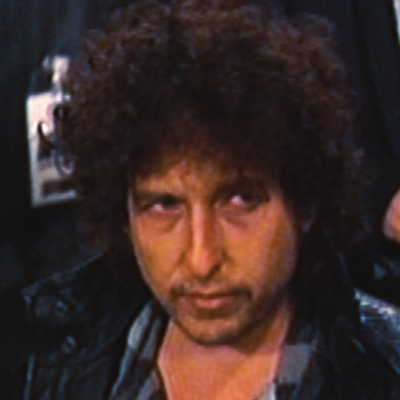
Gen-X nostalgia is a powerful drug. We grew up in the age of runaway mass media, but before the internet was around to capture every moment of our childhoods. So the signposts of our lives are well documented but not ever present; they have to be actively unearthed from time to time. For example, I vividly recall the somewhat surreal 1985 American Music Awards, which were hosted by Lionel Richie, who also swept the categories. I remember him yelling, “Out-RA-geous!” after his wins. For some unknown and unexplored reason, this is a formative memory for me. Occasionally, I run into someone else who also witnessed this show as a child, and an immediate bond forms between us.
So it came as quite a shock to learn from watching Netflix’s new documentary The Greatest Night in Pop that on that very same night, after he was done hosting and winning the AMAs, Richie headed straight to a Los Angeles music studio to join dozens of other pop stars and recorded “We Are the World,” a song he and Michael Jackson had written earlier that week. Two Gen-X milestones crashing together. “We Are the World” is probably the only song for which I can immediately recall all the lyrics — not because I like the song, but because they made us sing the damn thing so many times in sixth-grade music class that the words have been seared into my brain.
It would probably not be diplomatic for Bao Nguyen’s documentary to start criticizing “We Are the World” as an actual piece of music. It was never meant to be great art, but rather a piece of mainstream activism by some of the most famous people on the planet, a charity single to raise money for famine relief in Ethiopia. Just a few months earlier, Bob Geldof had convened a who’s who of British and Irish pop stars to record “Do They Know It’s Christmas?” for the same purpose. “We have white folks saving Black folks,” Richie recalls Harry Belafonte saying. “We don’t have Black folks saving Black folks.” And so, several dozen of the biggest musical stars in the known universe (plus Dan Aykroyd, who apparently just happened to be there) convened to record “We Are the World.”
The single was a massive hit, and it did generate an enormous amount of money for its designated purpose. The song itself carries the artistic evidence of its creation, and at its most informative, the film gets into the nitty-gritty of how “We Are the World” was arranged. Bruce Springsteen notes that the song had to be broad in order to carry all those voices. Later, we’re told that even though the song’s soloists would only sing one small portion of a verse — a few words, basically — they each had to do it in their own way: “Your style, your key, in half a line.” Producer Quincy Jones’s friend and collaborator Tom Bahler arranged the vocals to contrast with one another, so that Springsteen’s rougher voice was followed by Kenny Loggins’s higher, cleaner one, Tina Turner’s low warmth by Steve Perry’s operatic bellow. This makes for a very strange listening experience, but it’s also part of the song’s novelty act: Those of us who owned LPs by just about every single one of those singers had a grand old time identifying their voices.
Richie (who co-produced) is an enormously charming talking head, as he remembers sitting in Michael Jackson’s house and trying to come up with the song against the constant distraction of the pop superstar’s menagerie of animals, including Jackson’s pet boa constrictor Muscles. “I’ve seen this horror movie, and it doesn’t end well for the brother,” Richie recalls of the moment the snake suddenly emerged, right as he and Jackson came up with the song’s chorus. (“He heard us singing, Lion-EL,” Richie remembers Jackson saying guilelessly. “He wants to meet you.”)
The recording of “We Are the World” has been documented before in documentaries and books, so much of the information in the film isn’t new. Still, one can’t help but enjoy the spectacle of all these stars, who were like gods at the time, standing around getting to know each other like awkward kids at a school social. Jones had taped a “Check your ego at the door” sign on the entrance, and the musicians weren’t allowed to bring assistants or handlers into the studio. They did know the cameras were on them — a music video and a documentary were being recorded simultaneously — so they were on their best behavior.
And the anecdotes are mostly on brand for the musicians. Cyndi Lauper’s solo was ruined repeatedly by weird background noises that sounded like people laughing, until the cause was revealed to be all the jewelry she was wearing. Bob Dylan, always a bizarre presence on the song itself, was “more uncomfortable than any other person there” and couldn’t figure out how to sing his lines until Stevie Wonder did his Bob Dylan impersonation for him. Waylon Jennings bailed when Wonder suggested that part of the piece be sung in Swahili. (That idea was abandoned when it was pointed out to Wonder that Ethiopians don’t speak Swahili. Jennings did reportedly return.) Sheila E., a relative newcomer, began to suspect that she was only there to lure Prince, who never showed up. Al Jarreau was drunk. Diana Ross, by the end of the night, was like that one friend at the reunion who never wants the night to end. By the end of The Greatest Night in Pop, I could relate.
More Movie Reviews
- The Accountant 2 Can Not Be Taken Seriously
- Another Simple Favor Is So Fun, Until It Gets So Dumb
- Errol Morris Has Been Sucked Into the Gaping Maw of True Crime


